The Isothermal Oxidation of High-Purity Aluminum at High Temperature
Abstract
:1. Introduction
2. Experimental Methods
3. Results and Discussion
3.1. Thermogravimetric Analysis—Differential Scanning Calorimetry
3.2. Scanning Electron Microscopy
4. Conclusions
- The rate or extent of oxidation in air was found to be a non-linear function of the temperature. Different temperature ranges resulted in different behavior, in agreement with the literature.
- At temperatures between 650 °C and 750 °C, very little oxidation took place, even after 12 h exposure to air. At 850 °C oxidation occurred after an induction period, while at 950 °C a similar amount of oxidation occurred as at 850 °C, but more promptly.
- Raising the temperature further resulted in rapid passivation of the surface of the aluminum sheet, as only small and gradual mass increases were measured at oxidation temperatures of 1050 °C, 1150 °C, and 1250 °C. Although the amounts of oxidation occurring at these three temperatures were very small, it was observed that the rates of mass increase was proportionally to temperature.
- At 1250 °C and above, an initial extremely rapid mass increase was observed followed by a more gradual increase in mass. The initial rapid increase was accompanied by a significant exotherm as measured by DSC.
- At temperatures of 1350 °C and above, mass loss was recorded during the temperature ramp under inert atmosphere; the mass loss began at about 1350 °C and became significant above 1400 °C. This is attributed to vaporization of aluminum.
- By scanning electron microscopy (SEM); the observed alumina skin thicknesses correlated qualitatively with the observed mass increases for each oxidation temperature studied. The outer surface of a spheroidal particle produced by oxidation of an aluminum specimen at 1050 °C revealed a partially hollow sphere of aluminum, with a fractured outer alumina shell.
- Specimens oxidized at temperatures below 1050 °C did not transform into spheroidal particles, rather they retained the overall morphology of the aluminum material, presumably due to the stabilizing effect of the native alumina shell at these temperatures.
Author Contributions
Funding
Institutional Review Board Statement
Informed Consent Statement
Data Availability Statement
Acknowledgments
Conflicts of Interest
References
- Yilmaz, N. Modeling of aluminum particle ignition behavior in open atmosphere rocket propellant fires. Proc. Inst. Mech. Eng. Part G J. Aerosp. Eng. 2016, 230, 690–697. [Google Scholar] [CrossRef]
- Griego, C.; Yilmaz, N.; Atmanli, A. Analysis of aluminum particle combustion in a downward burning solid rocket propellant. Fuel 2019, 237, 405–412. [Google Scholar] [CrossRef]
- Griego, C.; Yilmaz, N.; Atmanli, A. Sensitivity analysis and uncertainty quantification on aluminum particle combustion for an upward burning solid rocket propellant. Fuel 2019, 237, 1177–1185. [Google Scholar] [CrossRef]
- Abernathy, R.N. Titan 34D-9 abort Cloud Measurements-Quantitative Imagery from Two Camera Sites; Space and Missile Systems Center Air Force Materiel Command: El Segundo, CA, USA, 1998. [Google Scholar]
- Trunov, M.A.; Schoenitz, M.; Dreizin, E.L. Effect of polymorphic phase transformations in alumina layer on ignition of aluminum particles. Combust. Theory Model. 2006, 10, 603–623. [Google Scholar] [CrossRef]
- Kolarik, V.; del Mar Juez-Lorenzo, M.; Fietzek, H. Oxidation of micro-sized spherical aluminum particles. Mater. Sci. Forum 2011, 696, 290–295. [Google Scholar] [CrossRef]
- Yilmaz, N.; Vigil, F.M.; Tolendino, G.; Gill, W.; Donaldson, A.B. Effect of oxide layer formation on deformation of aluminum alloys under fire conditions. Proc. Inst. Mech. Eng. Part L J. Mater. Des. Appl. 2016, 230, 879–887. [Google Scholar] [CrossRef]
- Yilmaz, N.; Vigil, F.M.; Vigil, M.S.; Branam, R.; Tolendino, G.; Gill, W.; Donaldson, A.B. Effect of grain orientation on aluminum relocation at incipient melt conditions. Mech. Mater. 2015, 88, 44–49. [Google Scholar] [CrossRef] [Green Version]
- Jeurgens, L.P.H.; Sloof, W.G.; Tichelaar, F.D.; Mittemeijer, E.J. Growth kinetics and mechanisms of aluminum oxide films formed by thermal oxidation of aluminum. J. Appl. Phys. 2002, 92, 1649–1656. [Google Scholar] [CrossRef]
- Jeurgens, L.P.H.; Sloof, W.G.; Tichelaar, F.D.; Mittemeijer, E.J. Thermodynamic stability of amorphous oxide films on metals: Application to aluminum oxide films on aluminum substrates. Phys. Rev. B 2000, 62, 4707–4719. [Google Scholar] [CrossRef] [Green Version]
- Jeurgens, L.P.H.; Sloof, W.G.; Tichelaar, F.D.; Mittemeijer, E.J. Structure and morphology of aluminum-oxide films formed by thermal oxidation of aluminum. Thin Solid Film. 2002, 418, 89–101. [Google Scholar] [CrossRef]
- Levin, I.; Brandon, D. Metastable alumina polymorphs: Crystal structures and transitions sequences. J. Am. Ceram. Soc. 1998, 81, 1995–2012. [Google Scholar] [CrossRef]
- Dwivedi, R.K.; Gowda, G. Thermal stability of aluminum oxides prepared from gel. J. Mater. Sci. Lett. 1985, 4, 331–343. [Google Scholar] [CrossRef]
- Riano, O.A.; Wadsworth, J.; Sherby, O.D. Deformation of fine-grained alumina by grain boundary sliding accommodated by slip. Acta Mater. 2003, 51, 3617–3634. [Google Scholar] [CrossRef]
- Sibota, N.N.; Shokhina, G.N. Kinetics of polymorphous transformations of anodic alumina. Kristall und Technik 1974, 9, 913–919. [Google Scholar]
- Bergsmark, E.; Simensen, C.J.; Kofstad, P. The oxidation of molten aluminum. Mater. Sci. Eng. A 1989, 120–121, 91–95. [Google Scholar] [CrossRef]
- Jinsong, L.; Ligong, Z.; Haigui, Y.; Nan, Z.; Yongfu, Z.; Xingyuan, L.; Qing, J. Oxidation kinetics of nanocrystalline Al thin films. Anti-Corros. Methods Mater. 2019, 66, 638–643. [Google Scholar]
- Pang, X.; Li, S.; Qin, L.; Pei, Y.; Gong, S. Effect of trace Ce on high-temperature oxidation behavior of an Al-Si-coated Ni-based single crystal superalloy. J. Iron Steel Res. Int. 2019, 26, 83–87. [Google Scholar] [CrossRef]
- Xu, Y.; Liang, W.; Miao, Q.; Jiang, Q.; Ren, B.; Yao, Z.; Zhang, P.; Wei, D. High temperature oxidation behavior of Al2O3/Al composite coating on γ –TiAl. Surf. Eng. 2014, 31, 354–360. [Google Scholar] [CrossRef]
- Novak, P.; Nova, K. Oxidation behavior of Fe-AL, Fe-Si and Fe-Al-Si intermetallics. Materials 2019, 12, 1748. [Google Scholar] [CrossRef] [PubMed] [Green Version]
- Guo, Q.; Chen, J.; Li, J.; Guo, Y.; Yang, Z.; Yang, W.; Xu, D.; Yang, B. Oxidation mechanism of Al-Sn bearing alloys. Materials 2021, 14, 4845. [Google Scholar] [CrossRef] [PubMed]

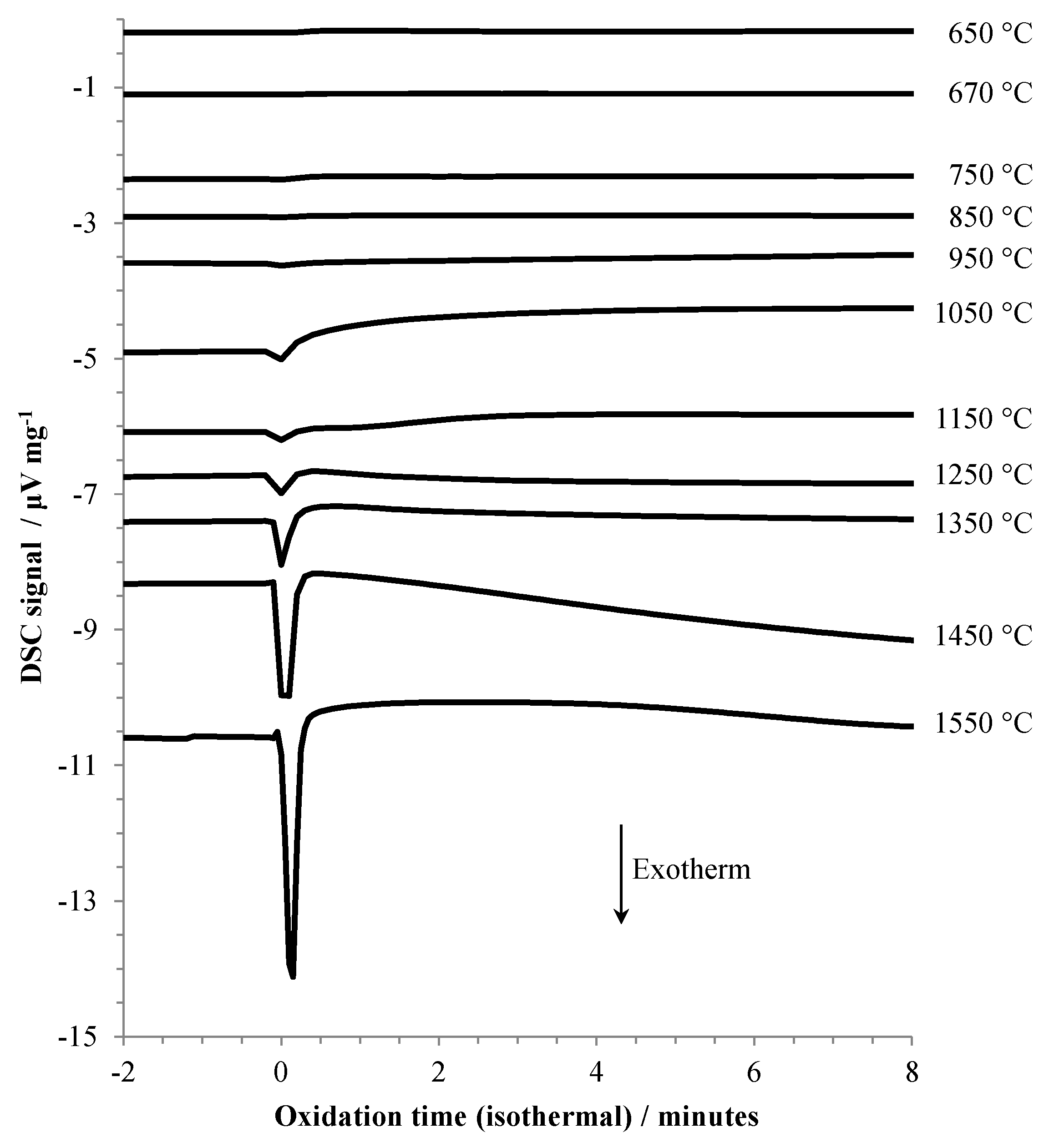
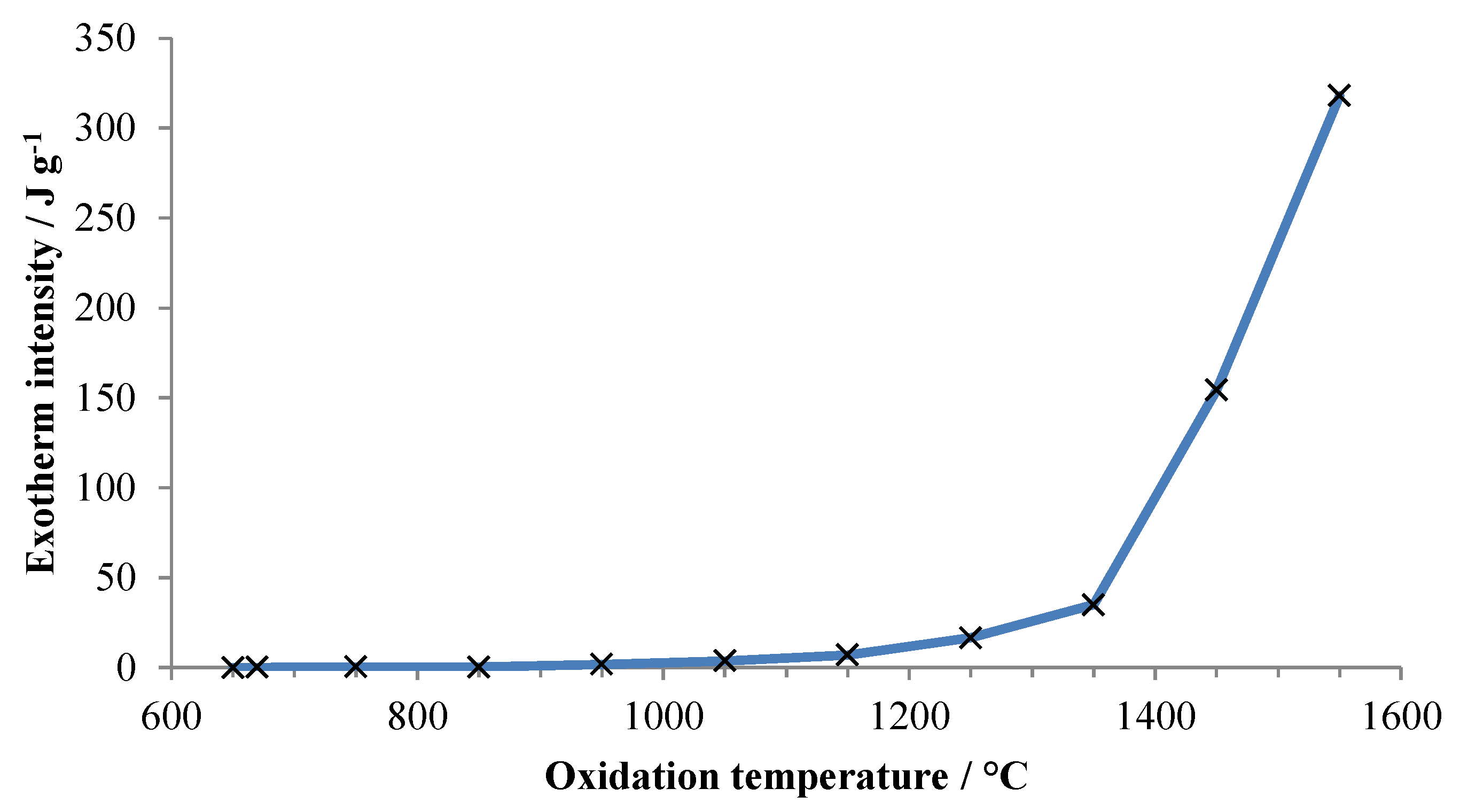
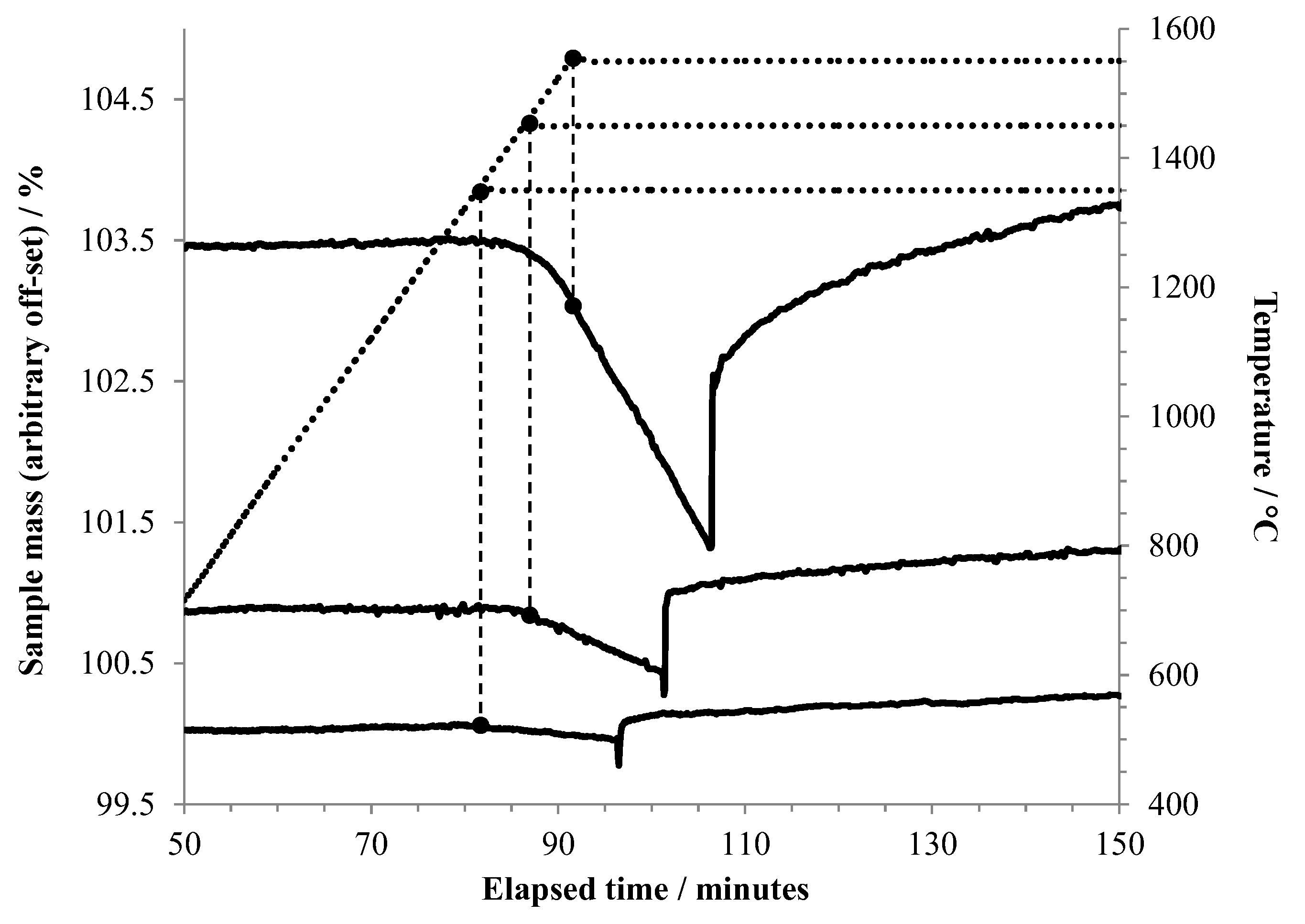
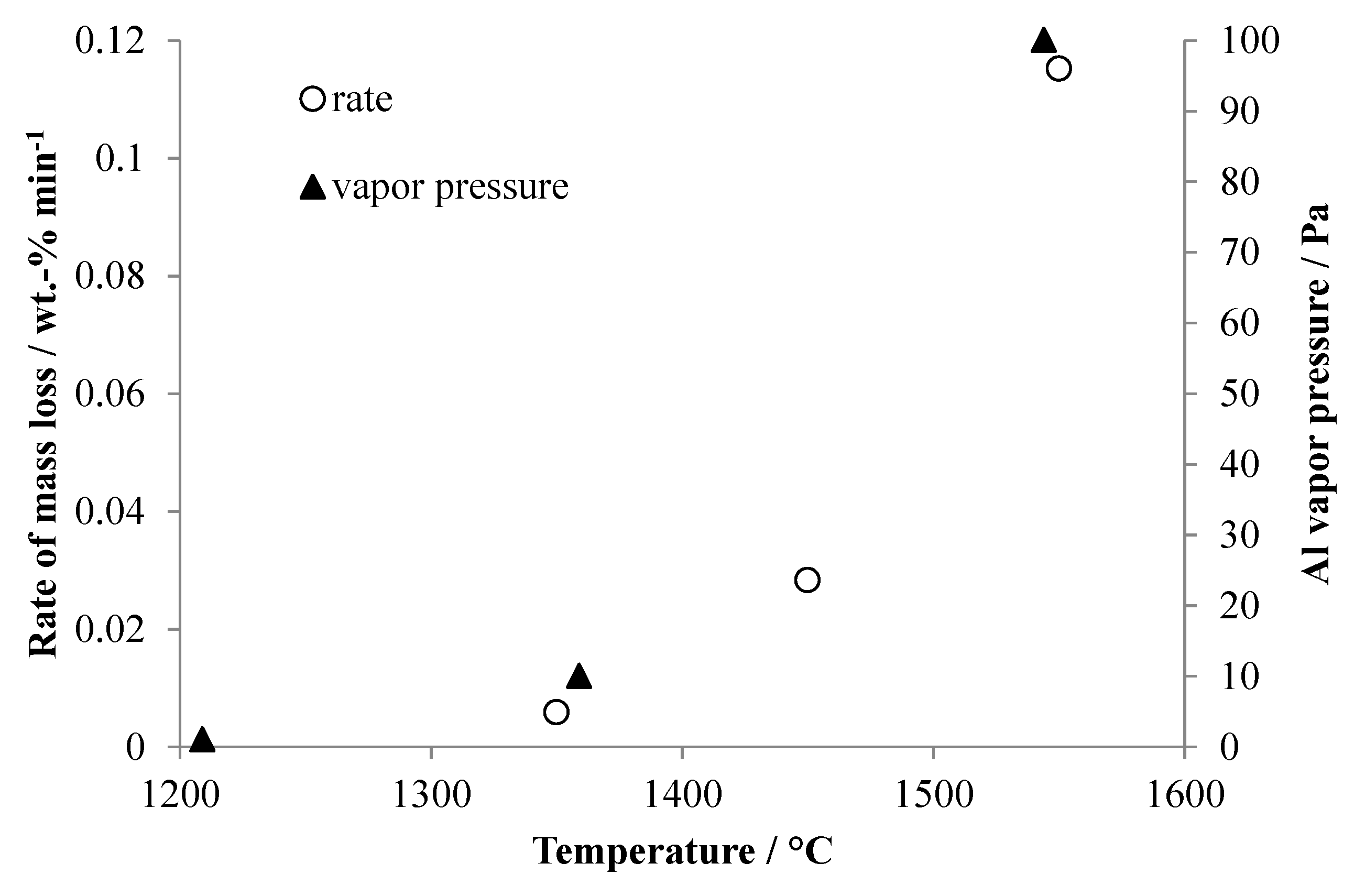
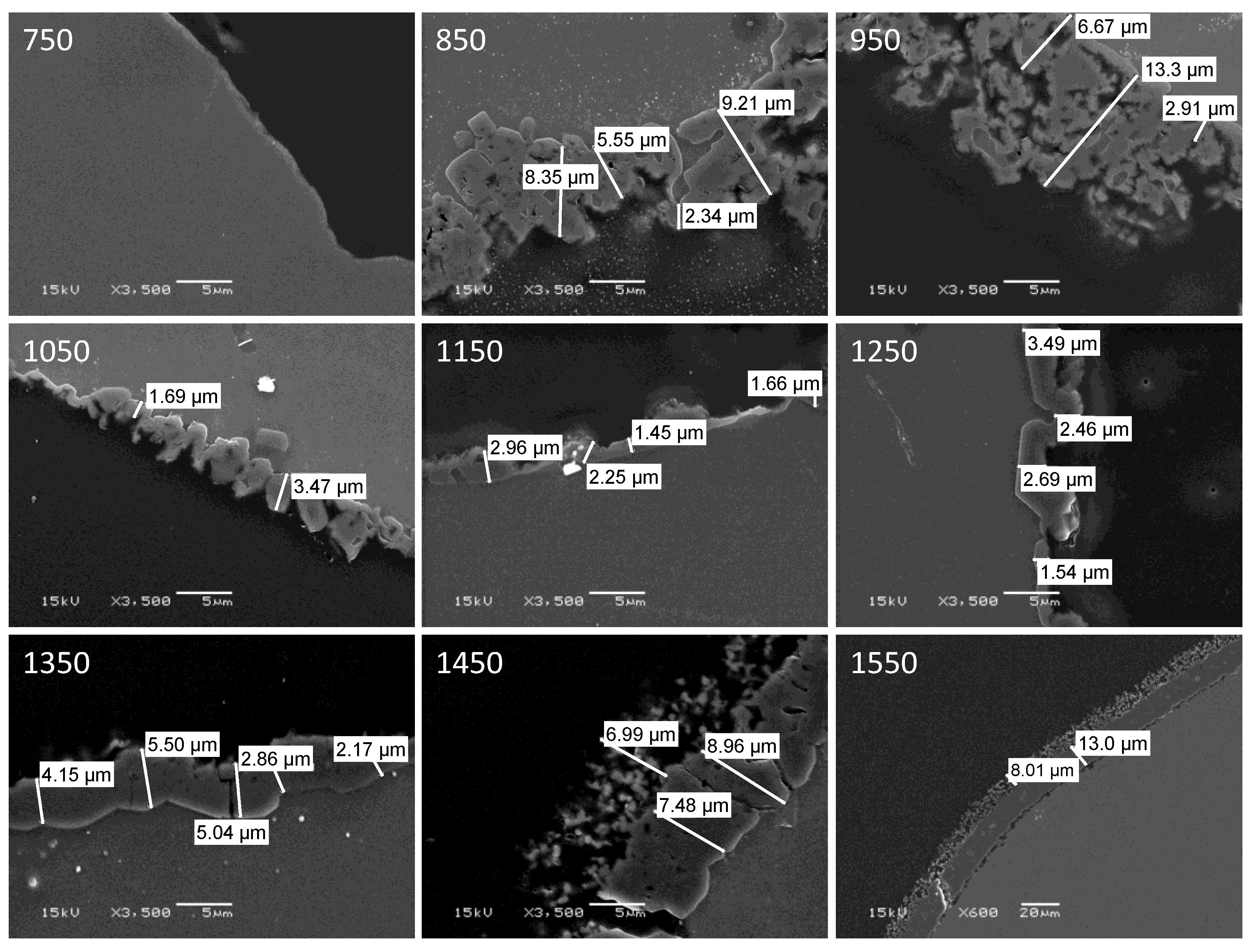
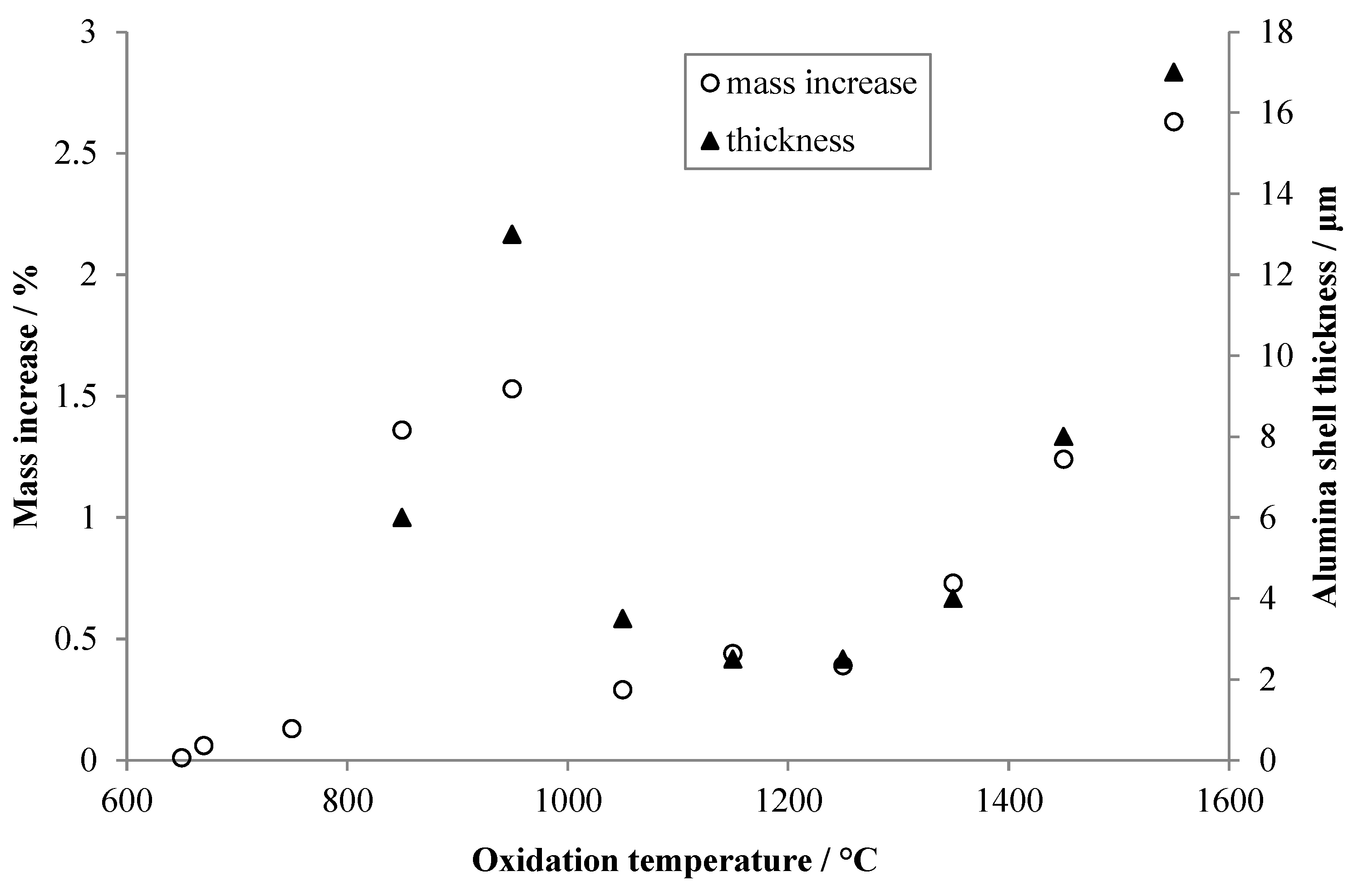
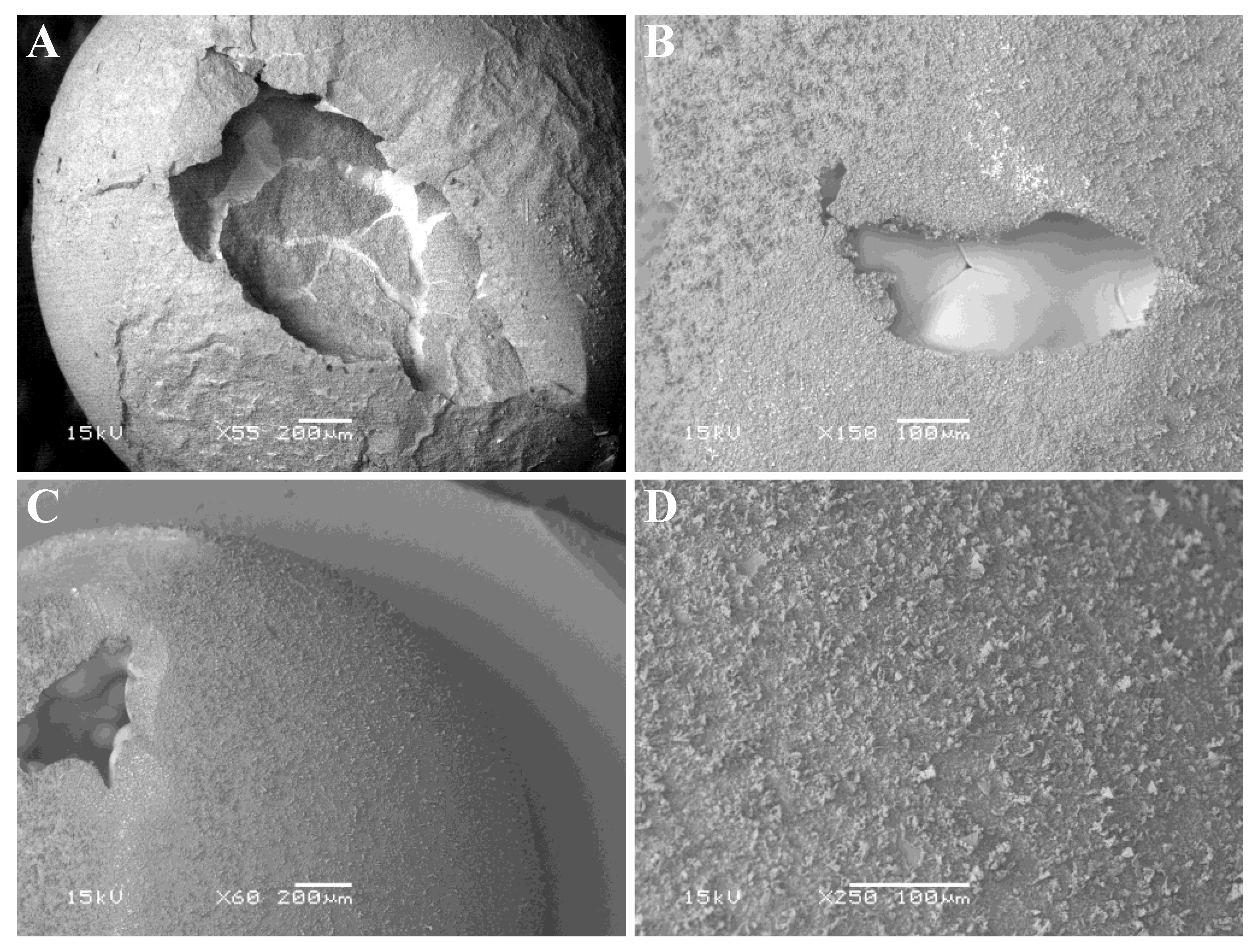
Disclaimer/Publisher’s Note: The statements, opinions and data contained in all publications are solely those of the individual author(s) and contributor(s) and not of MDPI and/or the editor(s). MDPI and/or the editor(s) disclaim responsibility for any injury to people or property resulting from any ideas, methods, instructions or products referred to in the content. |
© 2022 by the authors. Licensee MDPI, Basel, Switzerland. This article is an open access article distributed under the terms and conditions of the Creative Commons Attribution (CC BY) license (https://creativecommons.org/licenses/by/4.0/).
Share and Cite
Coker, E.N.; Donaldson, B.; Gill, W.; Yilmaz, N.; Vigil, F.M. The Isothermal Oxidation of High-Purity Aluminum at High Temperature. Appl. Sci. 2023, 13, 229. https://doi.org/10.3390/app13010229
Coker EN, Donaldson B, Gill W, Yilmaz N, Vigil FM. The Isothermal Oxidation of High-Purity Aluminum at High Temperature. Applied Sciences. 2023; 13(1):229. https://doi.org/10.3390/app13010229
Chicago/Turabian StyleCoker, Eric N., Burl Donaldson, Walter Gill, Nadir Yilmaz, and Francisco M. Vigil. 2023. "The Isothermal Oxidation of High-Purity Aluminum at High Temperature" Applied Sciences 13, no. 1: 229. https://doi.org/10.3390/app13010229
APA StyleCoker, E. N., Donaldson, B., Gill, W., Yilmaz, N., & Vigil, F. M. (2023). The Isothermal Oxidation of High-Purity Aluminum at High Temperature. Applied Sciences, 13(1), 229. https://doi.org/10.3390/app13010229






